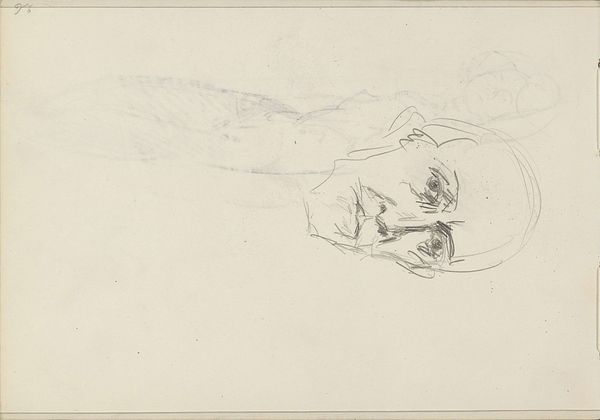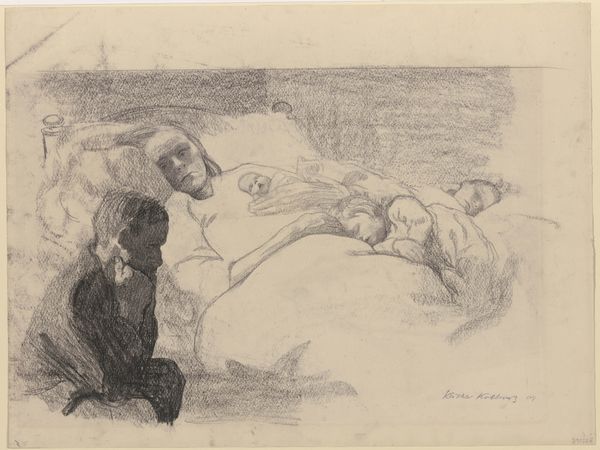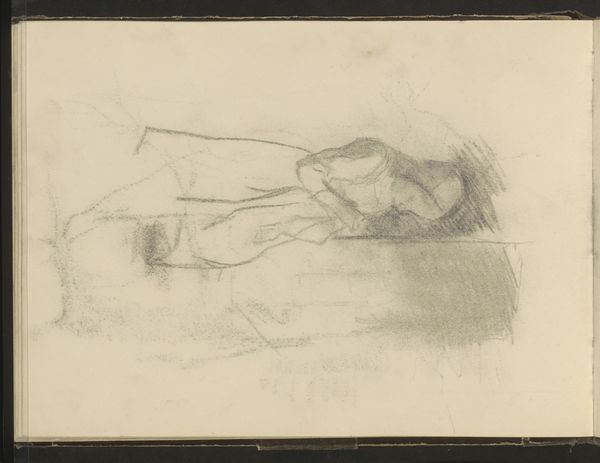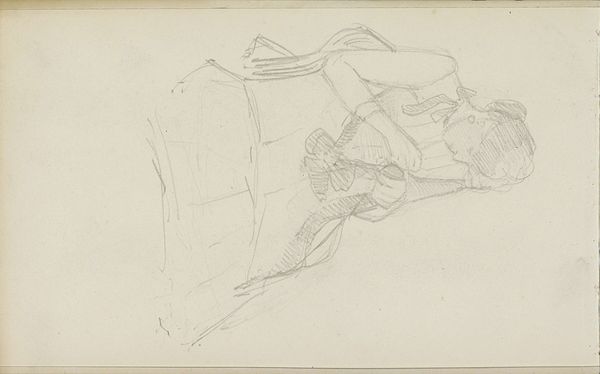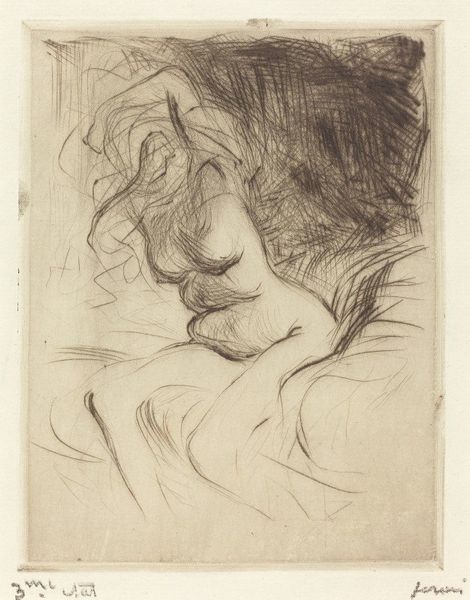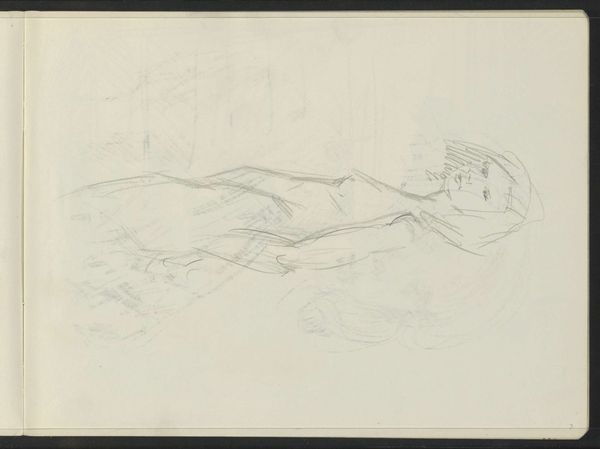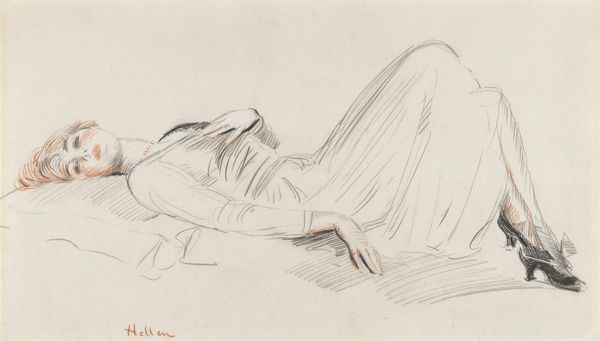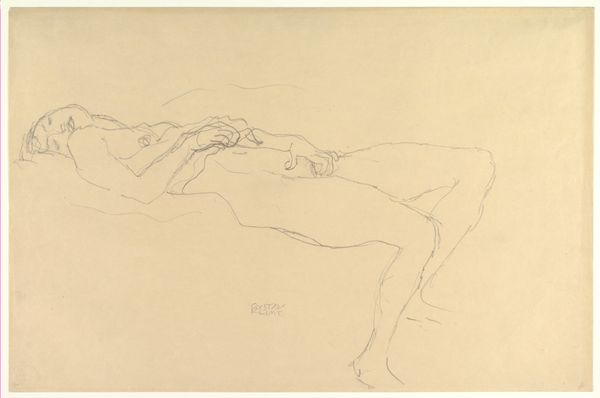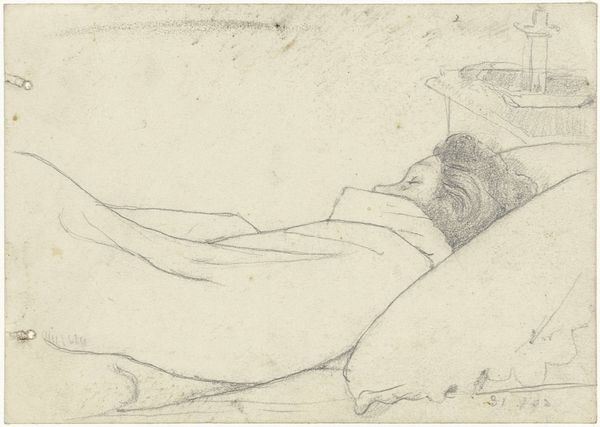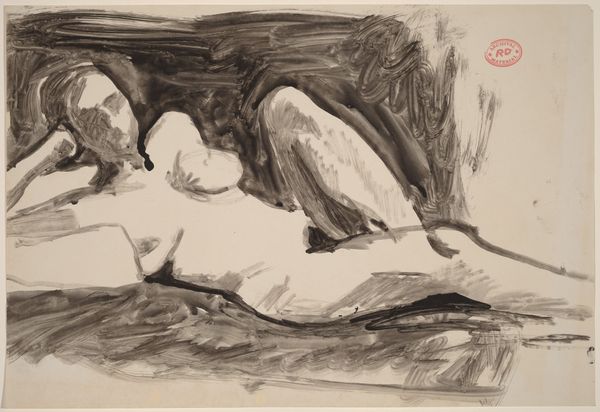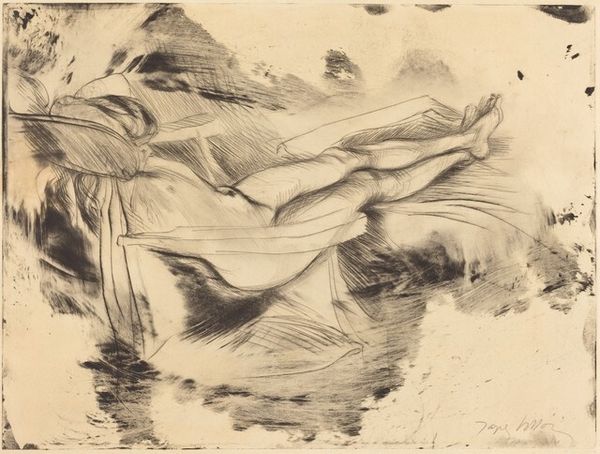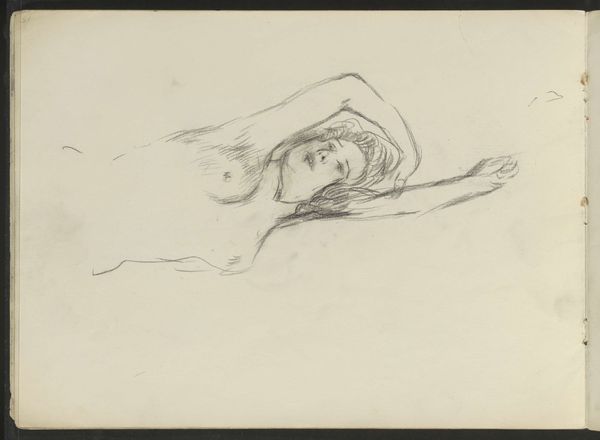
drawing, lithograph, print, paper, pencil
#
portrait
#
drawing
#
lithograph
# print
#
impressionism
#
paper
#
pencil drawing
#
pencil
#
portrait drawing
Dimensions: 217 × 272 mm (image); 308 × 396 mm (sheet)
Copyright: Public Domain
Editor: This is "Dead Child," a lithograph by Camille Pissarro from 1874. The scene feels so intimate, almost like we're intruding on a private moment of grief. What do you make of Pissarro choosing this subject, especially given the artistic conventions of the time? Curator: Well, the choice itself challenges those very conventions. Academic art largely ignored such harsh realities of daily life. But the Impressionists, and Pissarro in particular, were invested in depicting modern existence. The death of a child, sadly, was a frequent occurrence in the 19th century due to high infant mortality rates, directly correlated to poverty. Consider this drawing not just a portrait, but a social commentary, a stark reflection of societal inequalities. Editor: So it's a political statement disguised as a domestic scene? Curator: Not entirely disguised. Look at the spareness of the lithograph, the fragility of the lines. It mirrors the vulnerability of the child and, by extension, the precariousness of life for working-class families. Does the child look peaceful to you, or are you seeing something else? Editor: There’s a stillness, definitely, but also a sense of unease in the scratchy lines that form the shadows. I hadn't considered how radical it would be to portray this so directly, not as some sentimentalized deathbed scene. Curator: Precisely! It forces the viewer to confront the uncomfortable truth, bypassing the usual romanticized narratives around death, popular at the time. Pissarro implicates the society, not just the individual family experiencing the loss. Editor: That’s a completely different lens than I initially saw it through. Thinking about its role in depicting and responding to the social climate makes the artwork incredibly powerful. Curator: Exactly. Art like this serves as a historical mirror, reflecting both the individual pain and broader social failures of its time, which still echoes today.
Comments
No comments
Be the first to comment and join the conversation on the ultimate creative platform.
